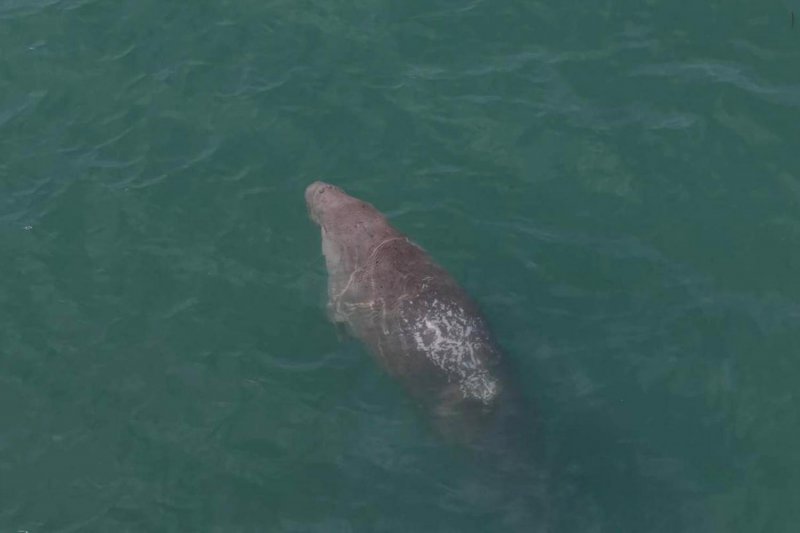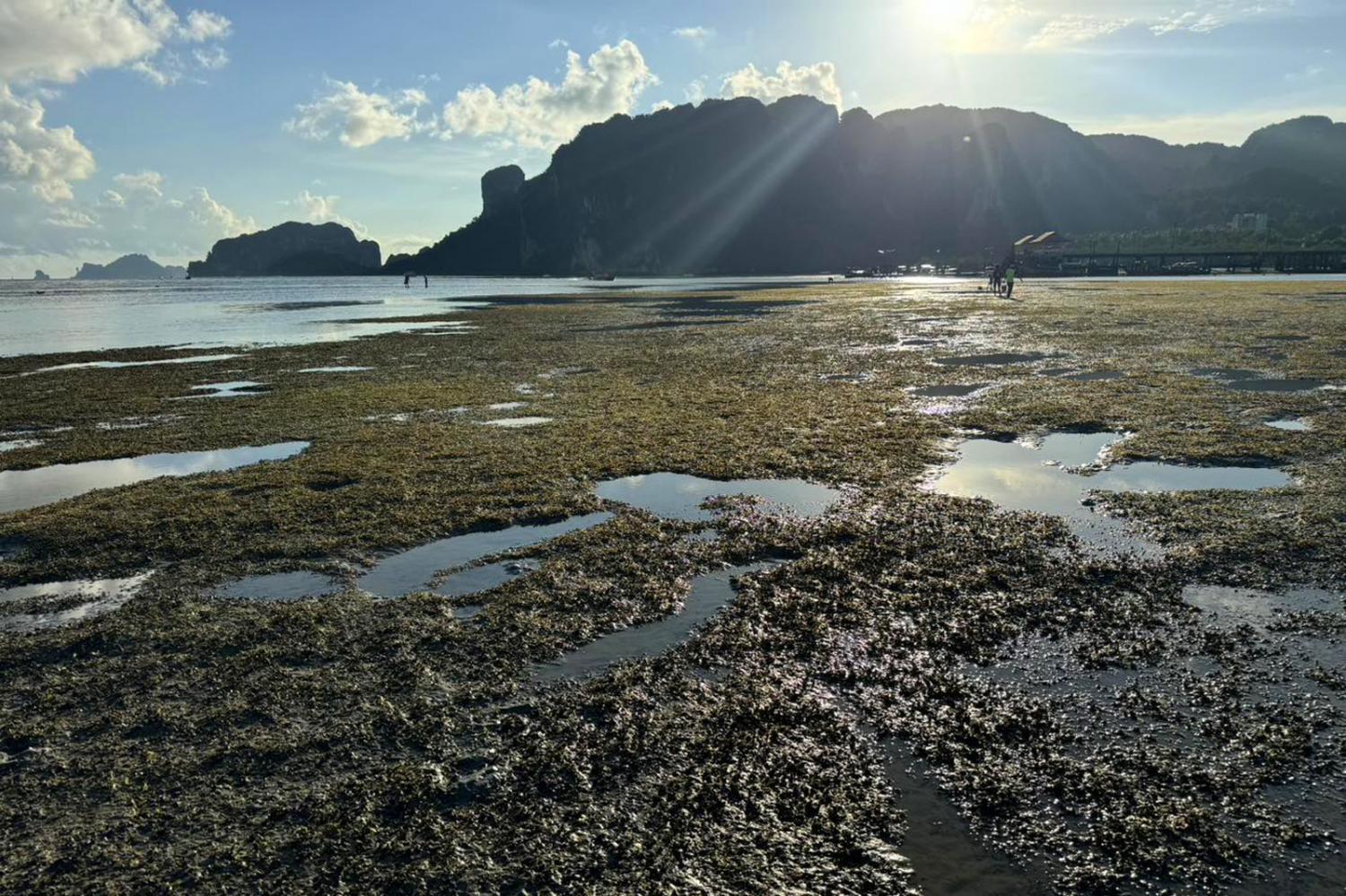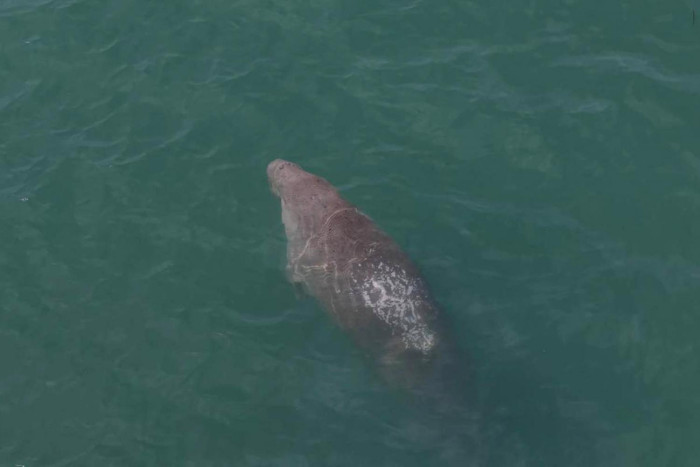PUBLISHED : 17 Oct 2025 at 06:41
Small
Medium
Large

A dugong is spotted during a drone survey by academic and planning officers of Hat Noppharat Thara-Mu Ko Phi Phi National Park in the Ao Nam Mao area. (Photo: Hat Noppharat Thara – Mu Ko Phi Phi National Park)
The Thai Coral Reef and Marine Life Conservation Foundation is stepping up its efforts to restore seagrass beds across the Andaman Sea, following reports of a drastic decline in dugong populations caused by food shortages and deteriorating marine ecosystems.
Kongkiat Kittiwatthanawong, a member of the foundation’s academic promotion subcommittee, said the dugong population, surveyed this year using drones, had dropped sharply from 248 two years ago to just 114.
The largest remaining dugong populations were recorded in Trang and coastal areas along the Andaman Sea. Mr Kongkiat said the steep decline is primarily due to the critical loss of seagrass — the dugong’s main food source — resulting from the effects of climate change.
He said the decline began early last year, when a “sea drought” in the Andaman Sea destroyed at least 20,000 rai of seagrass beds. “The decline in food resources has forced dugongs to migrate in search of food, leading to more frequent sightings and population records this year,” he said.

A rich bed of seagrass at Hat Noppharat Thara-Mu Ko Phi Phi National Park where park officials recently found traces of dugongs feeding in the area. (Photo: Hat Noppharat Thara – Mu Ko Phi Phi National Park)
Fishing gear, such as gill nets and fish traps, has also contributed to the drop in numbers. Mr Kongkiat said many dugongs are injured or killed after becoming entangled in ropes connecting traps and bobbers, which can cause them to drown, as dugongs are mammals that rely on lung-based respiration.
“With these findings, the foundation’s mission to rescue the dugong population will focus heavily on restoring seagrass beds,” Mr Kongkiat said.
The restoration project is being carried out in collaboration with the Phuket Marine Biological Centre. Seedling cultivation takes place on a four-rai plot in Ban Bang Phat, Bang Toey subdistrict, Muang district of Phangnga.
The mission aims to double the area of seagrass beds within one to two years, with the seedlings to be transplanted to underwater areas in Trang and Krabi to support the dugongs’ nutritional needs.
The foundation is also working with the Sireetarn Marine Endangered Animals Rescue Centre in Phuket to rehabilitate malnourished, sick, or injured dugongs that have washed ashore.
Together, these efforts increased the seagrass bed area to 97,784 rai last year. “We expect the dugong population to stabilise within the next five years, with the hope that it will not decline further,” Mr Kongkiat said, adding that although the current population has already been reduced by half, its chances of survival are improving.
